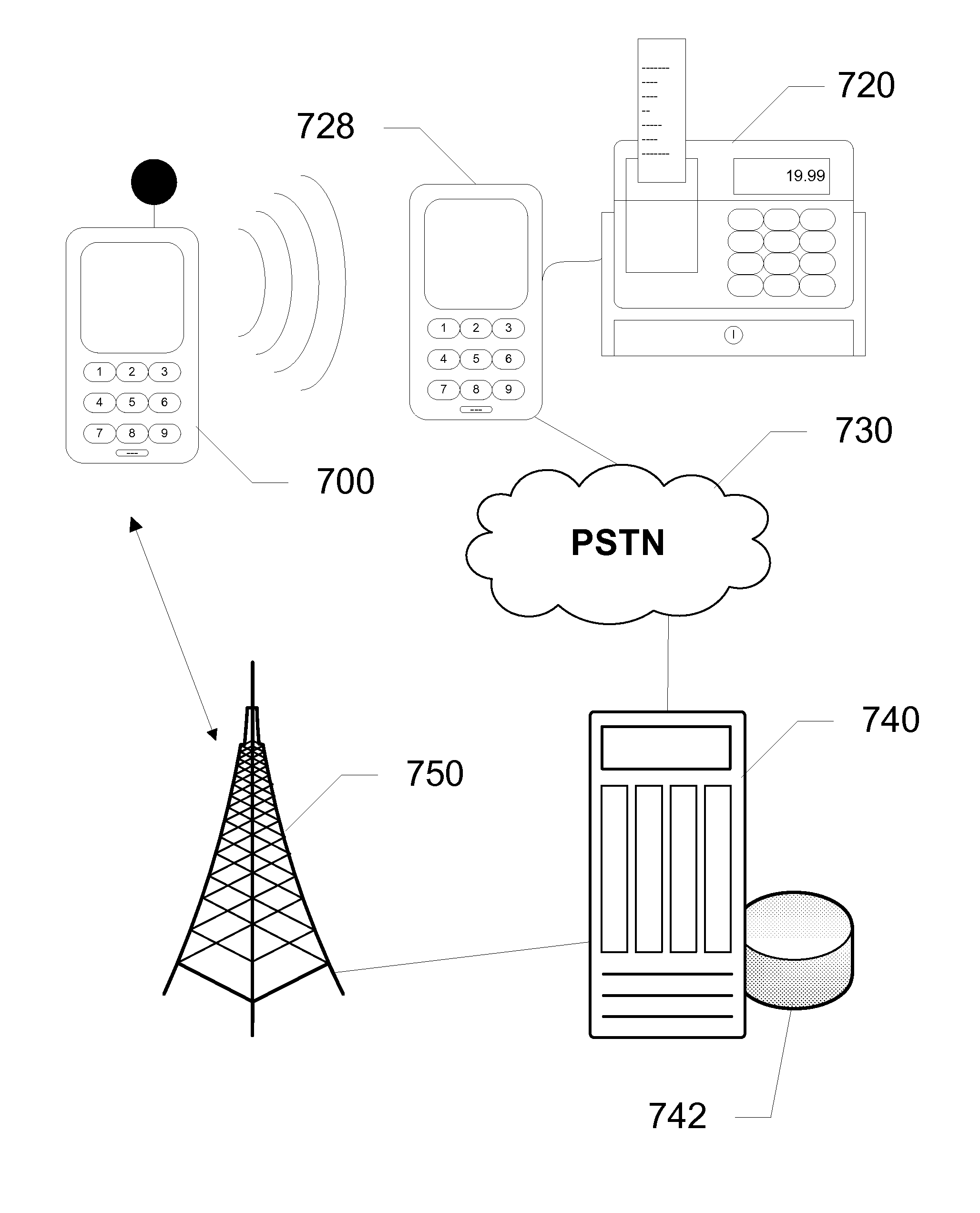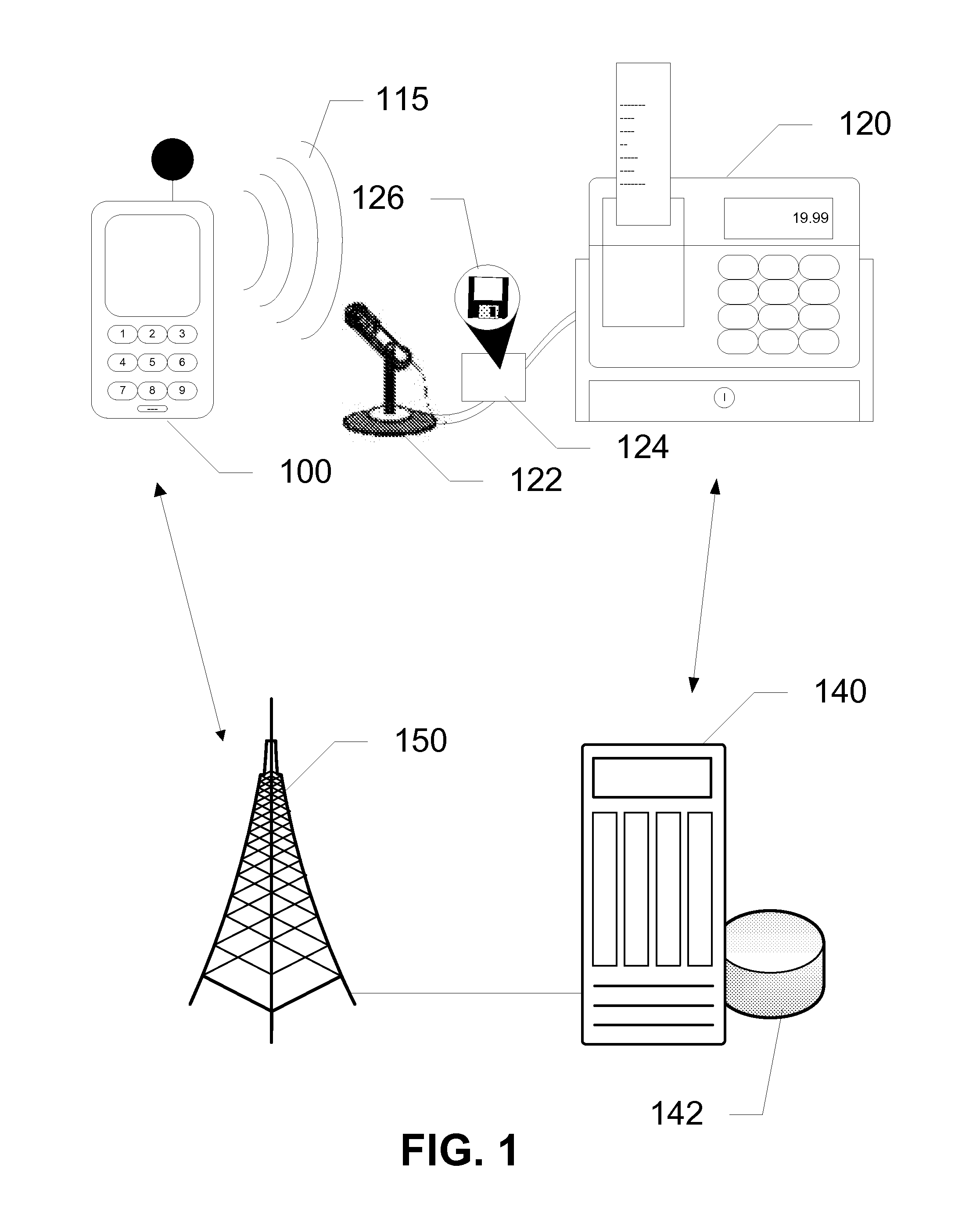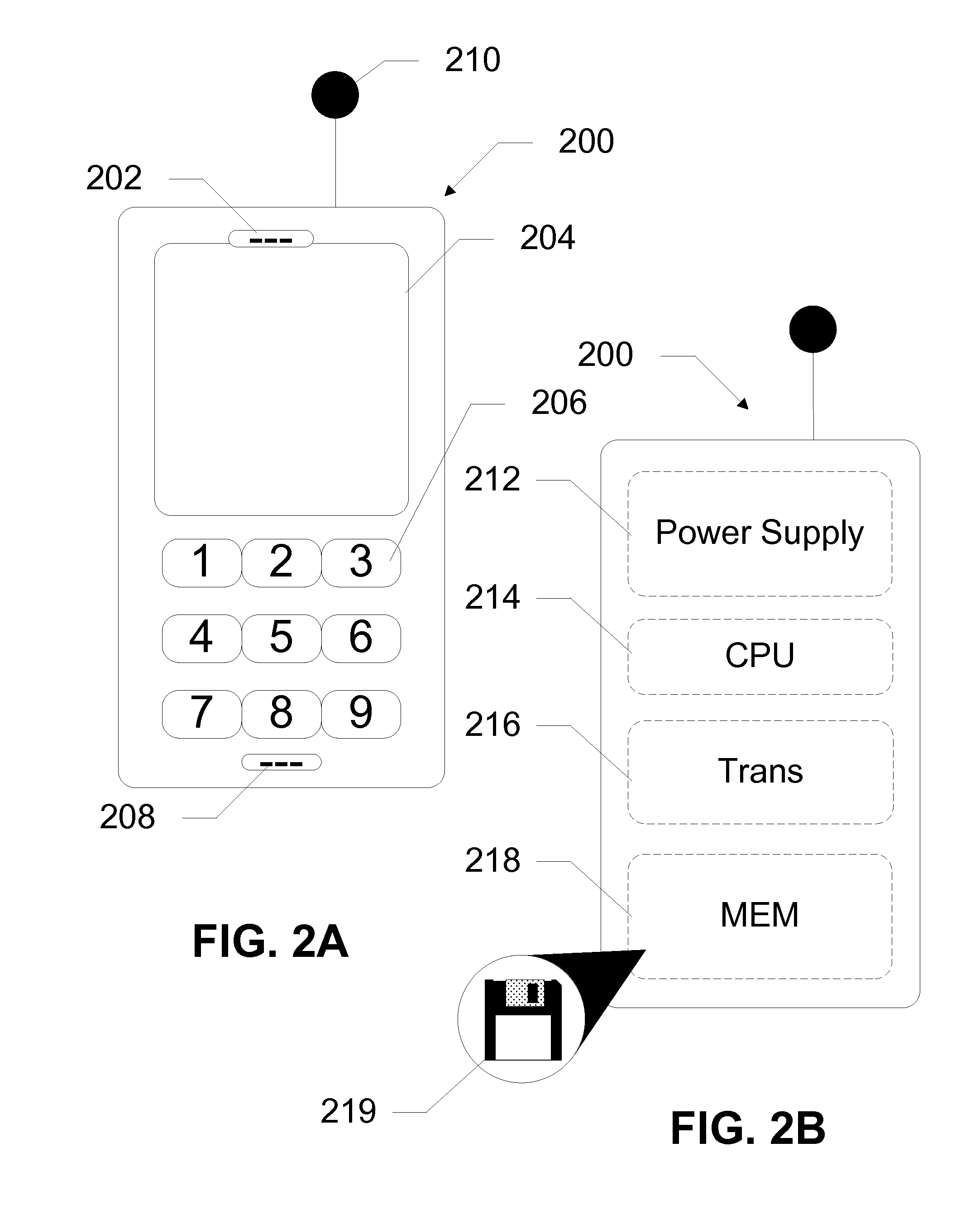Mobile Payment Using DTMF Signaling
a mobile payment and signaling technology, applied in the field of mobile devices, can solve the problems of increasing the cost of modifying phones and pos terminals, affecting the service life of the mobile device, so as to prevent abuse and inexpensively incorporate the
- Summary
- Abstract
- Description
- Claims
- Application Information
AI Technical Summary
Benefits of technology
Problems solved by technology
Method used
Image
Examples
Embodiment Construction
[0022]The present invention presents a novel technique for mobile payment. Dual-tone multi-frequency (DTMF) signals transmit a unique payment key to enable a transaction at a POS terminal. A mobile device equipped with at least a speaker and an input is used to connect to a server on the mobile network. Upon authentication of a user of the mobile device, the server generates the payment key, translates the key to DTMF signals, and plays the DTMF signals over the speaker of the mobile device. The user holds the mobile device speaker close to a microphone of a DTMF scanner at the POS terminal. The DTMF scanner includes logic that extracts the payment key from the DTMF signals, and the POS terminal uses the payment key to bill the user. The POS terminal transmits the bill with the payment key to the server on the network. The server ensures that the key is active, de-activates the key from further use, and debits an account for the user based on the amount presented in the bill. The ke...
PUM
 Login to View More
Login to View More Abstract
Description
Claims
Application Information
 Login to View More
Login to View More - R&D
- Intellectual Property
- Life Sciences
- Materials
- Tech Scout
- Unparalleled Data Quality
- Higher Quality Content
- 60% Fewer Hallucinations
Browse by: Latest US Patents, China's latest patents, Technical Efficacy Thesaurus, Application Domain, Technology Topic, Popular Technical Reports.
© 2025 PatSnap. All rights reserved.Legal|Privacy policy|Modern Slavery Act Transparency Statement|Sitemap|About US| Contact US: help@patsnap.com



